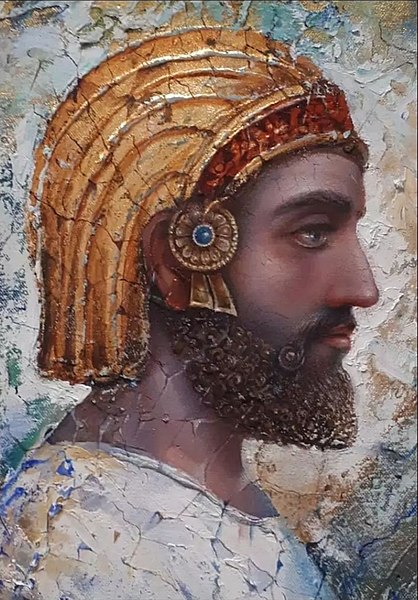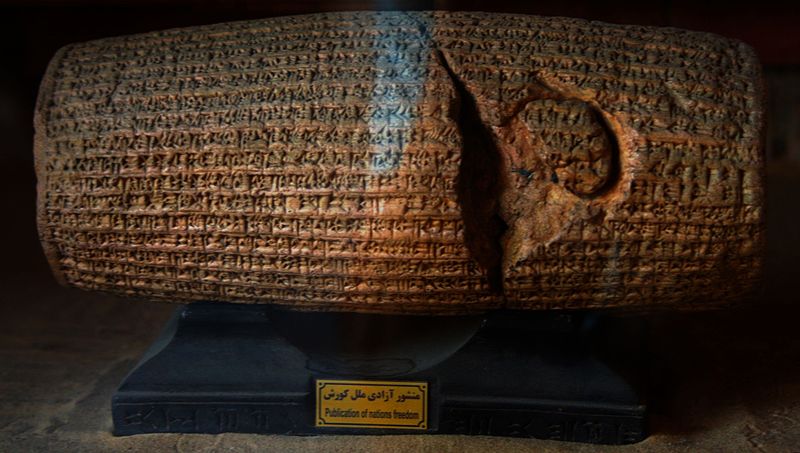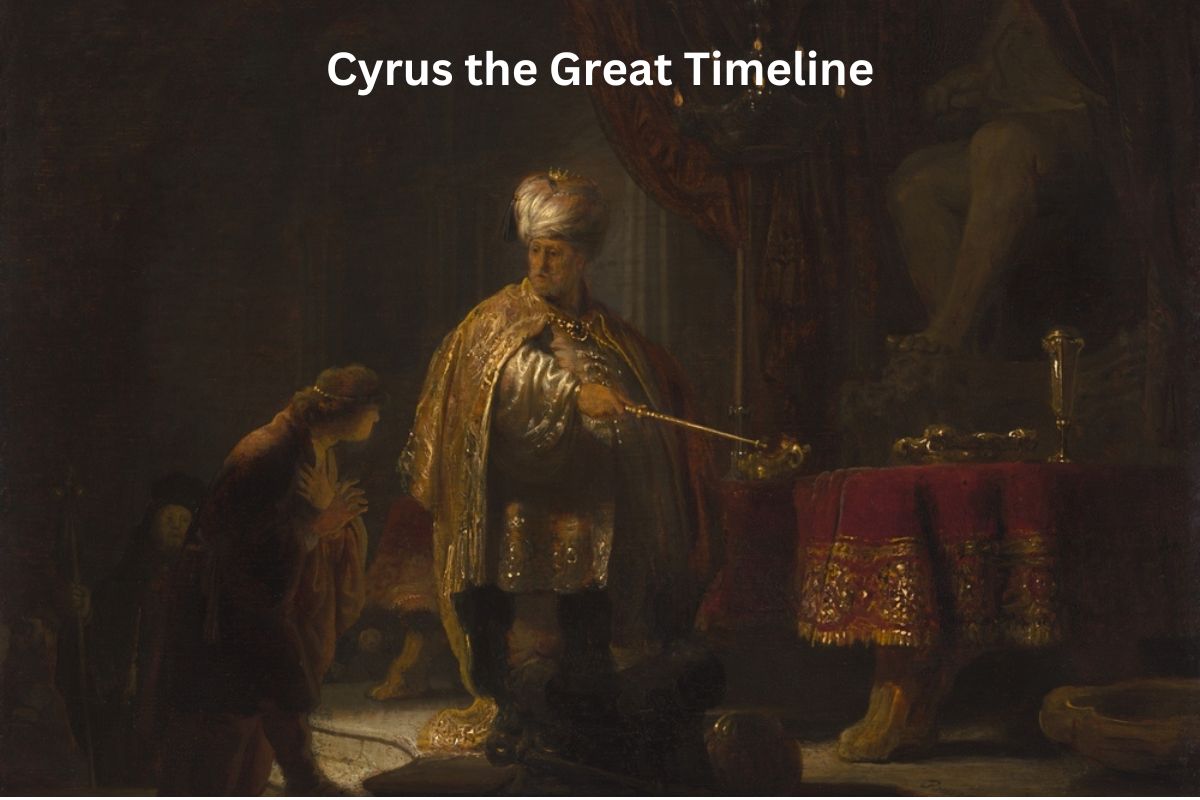Cyrus the Great, born around 600-576 BCE in Persis, Iran, was the founder of the Achaemenid Empire.
His conquests included Media, Lydia, and Babylon, known for his policy of religious tolerance and benevolent governance.
He expanded the empire into Asia Minor and is celebrated for his principles of just rule and respect for diverse cultures, leaving a lasting legacy as “Cyrus the Great.”
| Event | Date (Approximate) | Description |
|---|---|---|
| Birth | c. 600-576 BCE | Cyrus the Great was born in Persis, Iran. |
| Ascension to the Throne | c. 559-550 BCE | Became king of Anshan and later the Medo-Persian Empire. |
| Conquest of Media | c. 550 BCE | Cyrus conquered the Median Empire. |
| Conquest of Lydia | c. 546 BCE | Lydia, ruled by Croesus, was conquered. |
| Conquest of Babylon | 539 BCE | Babylon was captured without resistance. |
| Cyrus Cylinder | c. 539 BCE | Cyrus issued the Cyrus Cylinder, emphasizing his policies. |
| Expansion into Asia Minor | c. 546-539 BCE | Cyrus expanded his empire into Asia Minor. |
| Death | c. 530 BCE | The exact date and circumstances of his death are unclear. |
| Legacy | Ongoing Influence | Cyrus’s legacy includes his benevolent rule, the Achaemenid Empire, and his principles of governance. |
Timeline of Cyrus the Great
Birth (c. 600-576 BCE) in Persis, Iran
Cyrus the Great was born in the region of Persis, which is located in what is now modern-day Fars Province in Iran.
His birthdate is estimated to be around 600 to 576 BCE, though the exact year is not known with certainty.
He was born into the royal family of Persis, a small kingdom in the southwestern part of the Iranian plateau.

Ascension to the Throne (c. 559-550 BCE)
Cyrus ascended to the throne of Anshan, a region within Persis, in the late 6th century BCE.
He later succeeded his father as the ruler of the Medo-Persian Empire, a more extensive and powerful domain that included Persis and other regions of the Iranian plateau.
Also Read: Facts About Cyrus the Great
Cyrus’s ascent to power marked the beginning of his efforts to consolidate the Persian tribes and expand his territory.
Conquest of Media (c. 550 BCE)
One of Cyrus’s early and significant achievements was the conquest of the Median Empire, which was ruled by King Astyages.
In a military campaign, Cyrus managed to defeat Astyages and subsequently incorporated the Median Empire into his expanding domain.
Also Read: Accomplishments of Cyrus the Great
This conquest was a critical step in the formation of the Medo-Persian Empire, which would later become known as the Achaemenid Empire under Cyrus’s rule.

Conquest of Lydia (c. 546 BCE)
After consolidating his rule over Media, Cyrus turned his attention westward and launched a military campaign against the Kingdom of Lydia.
Lydia, ruled by King Croesus, was known for its wealth, and Croesus was considered one of the wealthiest monarchs of his time.
The war between Cyrus and Croesus resulted in the fall of Lydia, and Croesus himself was captured. This conquest greatly enriched the Persian Empire, adding the wealth of Lydia to its treasury.
Conquest of Babylon (539 BCE)
One of the most notable achievements of Cyrus the Great was the capture of the city of Babylon in 539 BCE.
Cyrus’s conquest of Babylon was notable for its relatively bloodless nature. He entered the city without resistance from the people, and this event is famously recorded in the biblical Book of Daniel.
Cyrus’s rule in Babylon was marked by a policy of religious tolerance and respect for local customs, which earned him favor among the diverse population of the city.

Issued the Cyrus Cylinder (c. 539 BCE)
Following the capture of Babylon, Cyrus issued the Cyrus Cylinder, a cylindrical clay tablet inscribed with cuneiform script.
The Cyrus Cylinder is considered one of the earliest known declarations of human rights and religious freedom. It describes Cyrus’s benevolent treatment of conquered peoples and his policy of restoring religious artifacts and allowing displaced people to return to their homelands.
The text on the Cyrus Cylinder underscores the importance of justice, peace, and good governance in Cyrus’s rule and highlights his efforts to foster a sense of unity and harmony within his empire.
Expansion into Asia Minor (c. 546-539 BCE)
After consolidating his rule over Lydia and Babylon, Cyrus continued his expansionist policies into Asia Minor.
He incorporated territories such as Cappadocia and Phrygia into the Achaemenid Empire.
This expansion not only increased the size of the empire but also extended its cultural and economic influence into the western regions of Anatolia.
Death (c. 530 BCE)
The exact date and circumstances of Cyrus the Great’s death are not known with certainty.
According to historical accounts, Cyrus died in battle against the Massagetae, a nomadic people from Central Asia.
His death marked the end of his remarkable reign, but his legacy endured through the empire he founded and the principles he established.
Legacy, including the Achaemenid Empire and principles of governance.
Cyrus the Great left an indelible mark on history, and his legacy is multifaceted:
- Achaemenid Empire: His reign marked the beginning of the Achaemenid Empire, which would go on to become one of the most significant and enduring empires of the ancient world.
- Cyrus Cylinder: The Cyrus Cylinder, with its proclamation of religious tolerance and human rights, serves as an early example of such principles in governance.
- Tolerance and Respect: Cyrus’s policy of respecting the customs and religions of his subjects, as well as his benevolent treatment of conquered peoples, set a standard for just rule in the ancient world.
- Cultural Contributions: Under the Achaemenid Empire, Persian culture, art, and architecture flourished, leaving a lasting impact on subsequent civilizations.
- Cyrus’s Name: Cyrus’s name and reputation continued to be revered by later Persian rulers, and he was often referred to as “Cyrus the Great.”
Cyrus’s principles of governance and his legacy as a benevolent ruler continue to influence thinking about governance, human rights, and religious tolerance to this day.
He is celebrated as a symbol of enlightened leadership and is respected as a historical figure who promoted peace and harmony within his empire.
The Cyrus Cylinder, in particular, remains a symbol of the pursuit of justice and fairness in governance and has inspired discussions on human rights in modern times.
